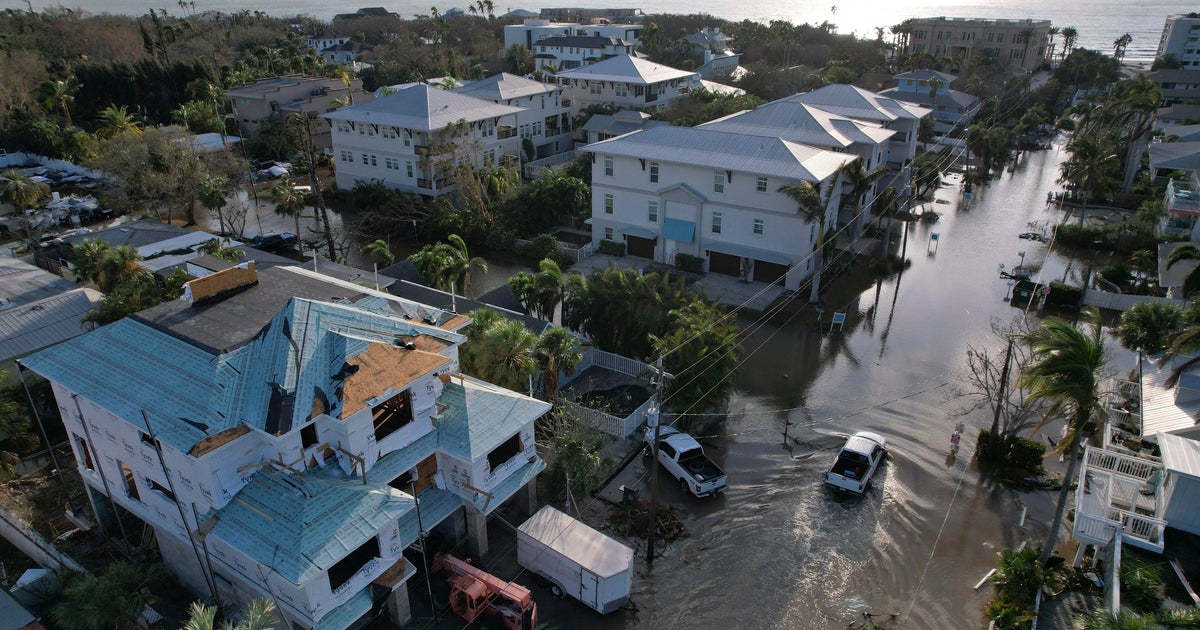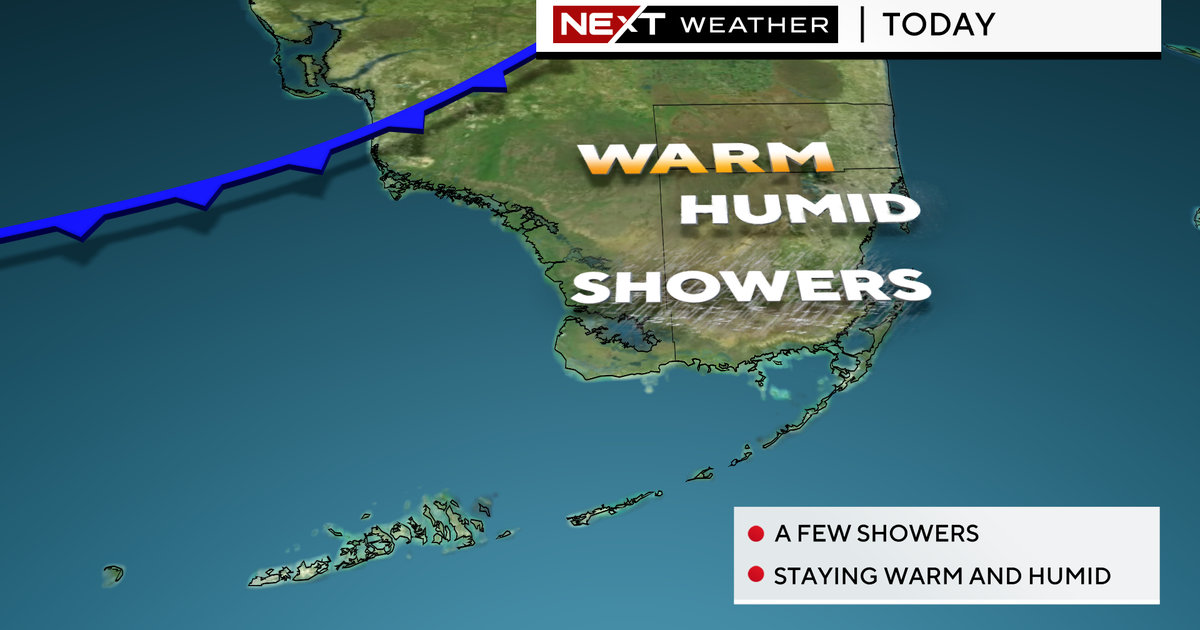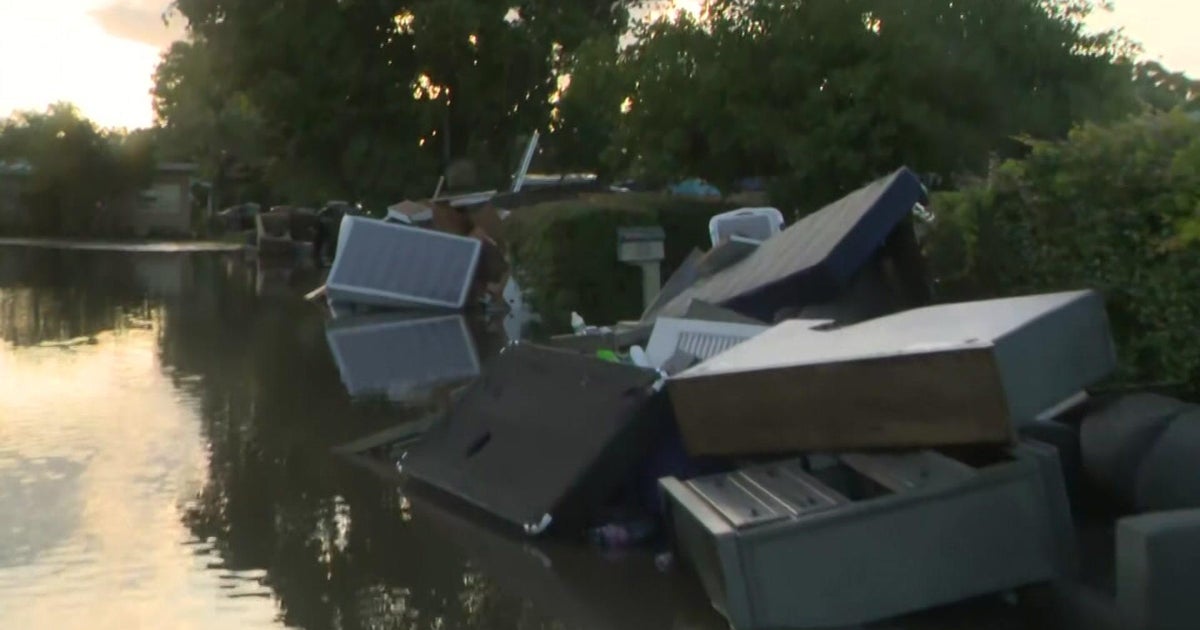Sandy Could Leave Path Of Historic Destruction
MIAMI (CBS4) - As of the 11 a.m. advisory, Hurricane Sandy has once again intensified. Sustained winds near the core are now 90 mph, making it a strong Category 1, close to Category 2 status. Wind gusts are easily over 100 mph near the center and the pressure has dropped to 938 mb.
This may be hard to believe, but if there was an average pressure for a certain category, 937mb typically corresponds to a category 3 or 4 storm! Now this system is not a typical system, this comparison is not perfect, but it illustrates well how intense this system really is.
What is impressing even seasoned forecasters is that at its core, Sandy is still a tropical system and its defying the odds in getting stronger as it moves north. So now, forecasters are even more concerned about the core of this system and the very strong winds associated with it at landfall along the New Jersey Shore.
Because there are so many tall buildings, it is important to note that winds will certainly be higher as at the tops of these buildings in Philly, NYC and surrounding areas. Many of these building have never experienced winds this strong so the extent of the damage remains to be seen.
This system has a hurricane center and a Nor'easter envelope. Thus, it has the power at its core and almost the same power surrounding. It therefore goes without saying that we are now expecting a majority of people within 100 miles of the center to be without power.
With leaves on the trees, there will be massive road blockages by fallen trees as well. Therefore, repair and restoration of power and other aspects of everyday life will likely take weeks. At the very least residents in the path of this storm should expect to be without power for a few days.
Coastal Flooding: This is probably the biggest threat. The storm's landfall timing could not be worse. It will make landfall early Monday evening at the exact same time as the high tide. To add insult to injury, the moon is now full. This is in fact a worst case scenario, there is no other phrase that exemplifies the situation better.
Along and to the north of the core, from Southern NJ to Long Island, including Raritan Bay and NYC, expect a general 6-8 feet of storm surge. In "nooks and crannies" like the heads of bays and inlets expect about 12 feet of surge.
Anyone who thinks they have seen bad ocean flooding in this area, has not seen anything compared to what this system will bring. Typical Nor'easters bring 2-4 feet of surge, this system will double and in some cases triple that. This surge will be widespread and potentially the worst in Raritan Bay, Sandy Hook, Atlantic Highlands, Staten Island, NY Harbor & Manhattan, Coney Island, Sheepshead Bay, Great South Bay of Long Island and west end of Long Island Sound, etc.
Snow: On the backside of this storm, in the elevations of West Virginia, North Carolina and Maryland we will see up to 3 feet of wet, heavy, crippling snow. And in the lower elevations a couple of inches are possible even in northern Virginia and South Ohio. Many will see their earliest measurable snowfall ever.
Rain: Already some areas near the Del Marva peninsula have picked up over a foot of rain, and are likely to see an additional 10 inches in some spots. Flash flooding from South New Jersey through Maryland, Delaware, South PA and Washington DC may become an issue.
The worst of Sandy will occur Monday afternoon through the evening. Sandy will stall over the Pennsylvania and the Northeast U.S. for a couple of days and begin to slowly wind down Tuesday and Wednesday. It will live up to all the media hype and then some. But if you stay home throughout the storm and stay inside until danger is cleared from the roads, and you will likely be safe.



